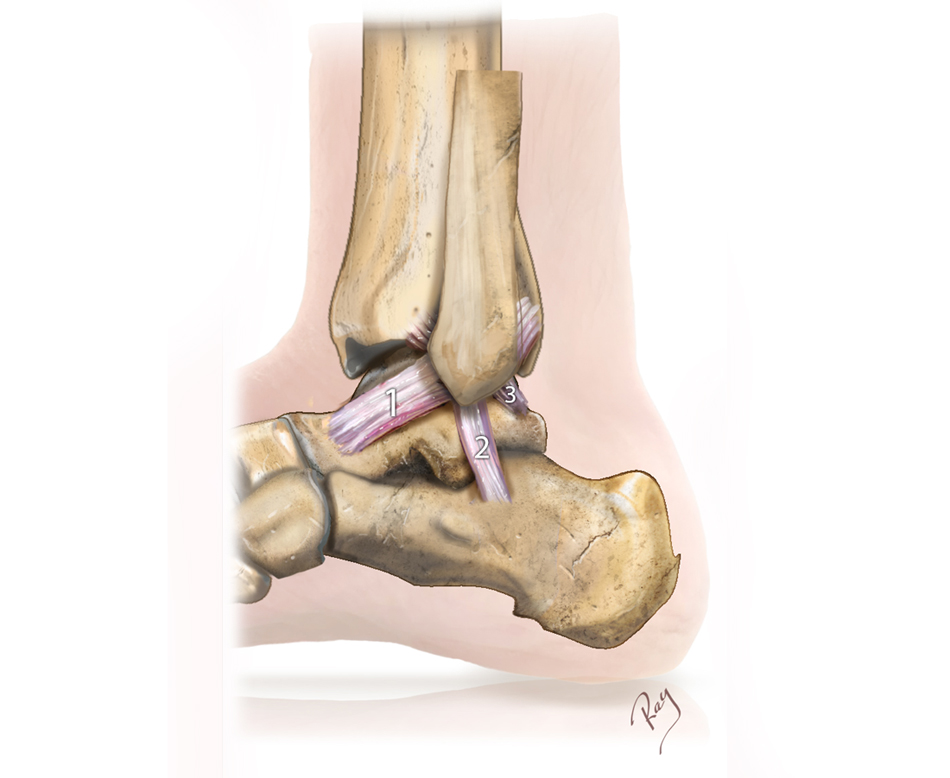What is it?
Ankle sprain is the most common orthopaedic injury and the primary reason for consulting a specialist. In most cases the ankle suffers a twisting injury that mainly affects the lateral ligaments, which are responsible for the stability of the joint. These three ligaments ensure joint congruence and prevent any abnormal movement of the bones in relation to each other.
When sprains are correctly treated, 90% heal spontaneously in 2-3 months If pain persists beyond this time, such sprains are called complex sprains. This kind of sprain then requires additional tests or special management.
The most common causes or persistent pain are:
- ankle instability due to sequelae (5% of sprains).
- post-sprain pain syndrome (5% of sprains).
- undiagnosed additional injury (fracture, tendon injury, etc.).
Persistent pain is a reason for consulting a specialist.

